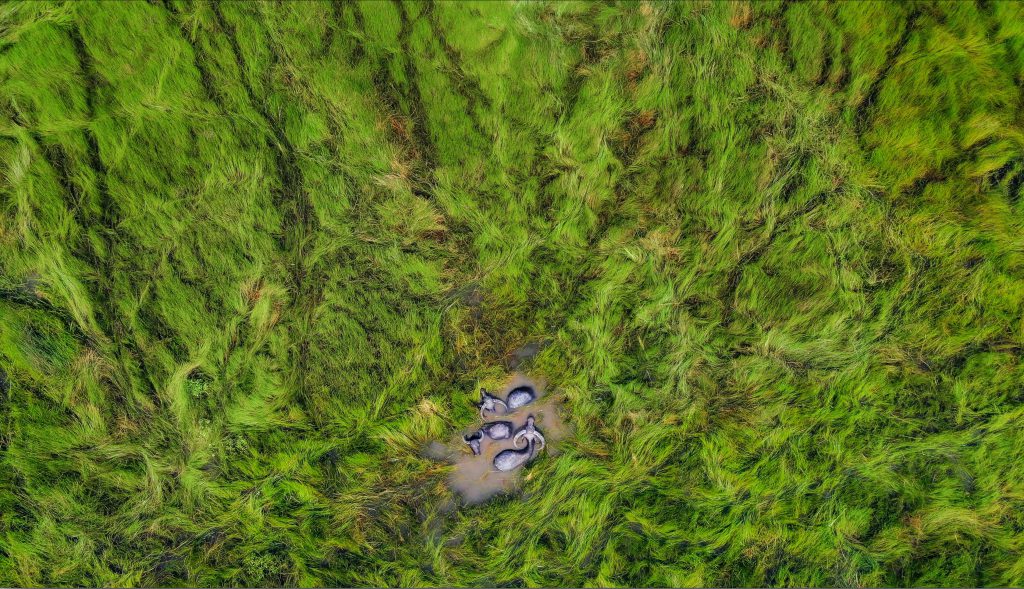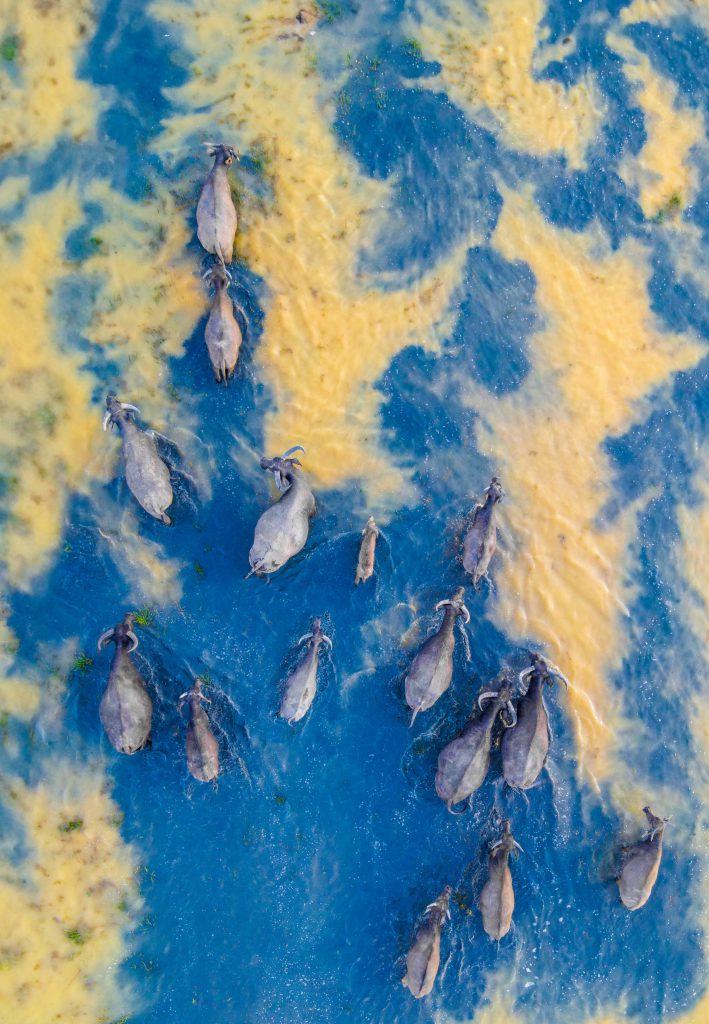Story: Huynh Phuong
Photos: Ngo Thanh Binh
Experience the buffalo grazing season in My Hanh Bac commune, Duc Hoa district, Long An province.

“Hey buffalo, I tell you this, buffalo,
Go out to the fields and plow with me.
Plowing is our traditional occupation.
I’m here, the buffalo is there; both willing to share the workload.
As long as rice grows in the field,
There will be grass for the buffalo to eat.”
Free to roam
Since ancient times, buffaloes have been celebrated in folk songs and literature. These creatures are closely tied to the lives of farmers working to cultivate once-barren land, especially in the Mekong Delta, which they’ve transformed into a prosperous and fertile region. Each year, during the flooding season from the 7th to the 11th lunar months, herds of buffaloes travel from one paddy field to another, seeking higher ground on which to rest and find food.
Reflecting the essence of “len,” a Khmer word for “freedom,” “len trau” translates as “setting buffaloes free”, a concept captured in the short story “Buffalo Grazing Season”, published in the 1962 story collection “Scent of Ca Mau Forest” by the late writer Son Nam.
These journeys remind us of the close ties between people and buffaloes, and people’s solidarity during hard times. An excerpt from Son Nam’s “Buffalo Grazing Season” reads:
“Under the moonlight, the buffalo Phao walks joyfully, its hooves sinking into the cool layer of silt. Today, the ground feels different than it did yesterday, even in the same place. Its nostrils quiver, trying to discern the fragrance of mountain grass and wildflowers from the scent of ripening paddy…”
The renowned 2004 film adaptation of “Buffalo Grazing Season” by director Nguyen Vo Nghiem Minh beautifully portrayed scenes of buffaloes grazing in An Giang. Viewers were left with a lasting impression of herds of buffaloes traversing the flooded land, revealing both the uncertain fates of people in the Mekong Delta and reflecting their hopes for a prosperous, abundant and peaceful future for people in Southern Vietnam.

Buffaloes grazing in Long An
Beyond the floodplains of An Giang, buffaloes also graze in the vast Dong Thap Muoi region, which spans Long An, Tien Giang, and Dong Thap provinces. Mr. Ngo Thanh Binh, a 45 year-old from Long An, shared that during the flooding season, photographers from all three regions flock to My Hanh Bac commune, Duc Hoa district, to capture images of buffaloes roaming in the fields. “It’s a true buffalo grazing season – images once thought to exist only in memories,” said Mr. Binh.
As the Vam Co Dong River flows toward the upper district of Duc Hoa, Long An, the previously barren grasslands suddenly turn lush, providing an ideal food source for herds of buffaloes. My Hanh Bac is home to five buffalo-rearing households, with each family owning between 20 and 100 buffaloes. One local buffalo herder is Mr. Nam Tuan, aged 64, who has 25 years of experience raising buffaloes.
Every morning, Mr. Nam releases his buffaloes and leads them into the fields to graze. Just as the roosters start to crow at dawn, the buffaloes awaken. They move in a line along the embankment before spreading out to graze. Here, they can roam without being tethered.
Even if the herd is large and comprises buffaloes from various owners, experienced buffalo herders can easily recognize their own buffaloes.
With the return of the floodwaters and abundant grass, the buffaloes grow strong and plump. The herders must work regardless of the weather, since the buffaloes will graze in both sun and heavy rain.
Near the rice paddies, herders erect temporary camps from which to watch their charges roam in the fields. By around 4 p.m., the herders will lead their buffaloes back to their pens for the night.
Captured from above, scenes of buffalo herds moving across green fields create memorable panoramas. Indeed, letting the buffaloes out to roam is a way to thank them for their year-round hard work in the fields.
Although Mr. Nam is getting older, he remains passionate about herding his buffaloes through the flooded fields. However, he worries about recent years, when people in the Mekong Delta have anxiously awaited the arrival of the floodwaters, burdened by heavy hearts. When less water flows down from the upper reaches of the Mekong River, there is less grass for the buffaloes to eat and scenes of grazing buffaloes grow scarce.
The annual buffalo grazing season only halts when the floodwaters start to recede. Then, people and buffaloes return to work, preparing for the upcoming cropping season. Mr. Nam hopes that future generations can experience the buffalo grazing season.










